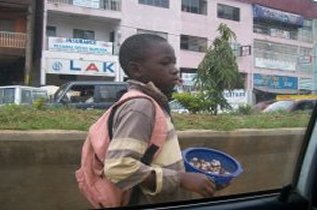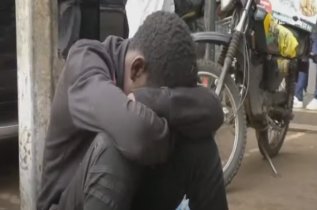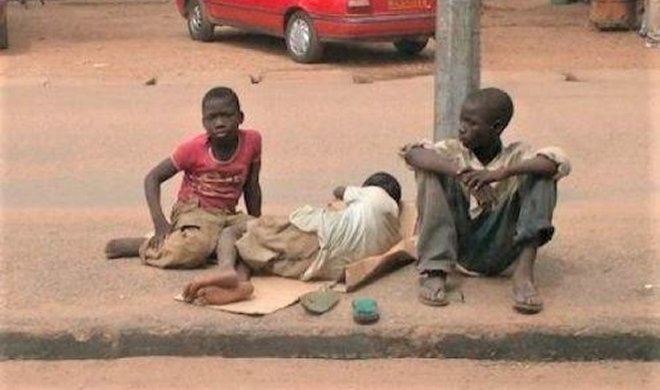|
|
|
Street Children |
Street Children |
Street Children | Street Children |
For information, videos and photos
about the African nation of
Cameroon, check out our profile pages.
More >
  |

|
One teenage girl recounts how she ran away from her family home in the northern town of Mokollo when she lost her mother, and her father brought in another wife who molested her and refused to send her to school. A recent survey of street children in Cameroon indicated that 80.2% were boys and 19.8% girls, with most (77.7%) aged between 15–17 years, though some were much younger. Around 80% stated they were Christians, while under 10% said that they were either Muslims with the majority of those coming from Yaounde. When education was discussed with them, 21.3% said they had never been to school while 77.44% had received some element of primary education whilst only 1.3% had attended secondary school. Unemployment in Cameroon is already high even for those with an education but for children who live, beg and steal on the streets there is little prospect of employment without exploitation. As one teenage street child stated, "A friend advised me to come to Cameroon, telling me there is work and money to be had here, but since I arrived [two months ago], I have seen nothing of that." In fact, most end up foraging for food in rubbish bins and, when they become ill, they can't afford to see a doctor. 44.9% of these teenagers had been homeless for a period of 7–12 months, whereas 35.8% had been homeless for less than 6 months and 19.3% for more than 13 months. In a relatively harsh regime, some get arrested for smoking or begging and find themselves incarcerated in adult prisons often for months, sometimes years at a time before their case is brought to court. In the meantime they are at further risk of catching AIDS related illnesses from older, infected prisoners awaiting trial. Some of these street children in Cameroon are trafficked into the country from neighbouring Nigeria and Gabon and are forced to work as domestic servants, however some flee this life and, without resources to return home, join the hundreds of others living rough in bus stops and video game houses. Others find refuge on the verandas of off-licences and bars, whilst others find sanctuary in abandoned or uncompleted houses. Of course, even when help is available, some of these street children refuse to be reunited with their families given they fled in the first place to avoid abuse. Cameroon's Minister of Women's Empowerment and the Family has stated these children will be given either education or job training to help them. However, those familiar with the issue of homelessness will be aware that any available figures mask the true extent of children living without parental support for they do not take account of those children bunking down with friends, bed hopping (trying to find somewhere to sleep for a few days at a time) nor children who work the streets by day and evening then return home to sleep and are therefore hard to identify and reach. Currently, Cameroon's Ministry of Social Affairs, partnering with the Ministry of Health, is rolling out with plans to find housing for 3,000 street children in the near future, spurred on by the risks they present given the Covid outbreak. This initiative also aims to help orphans and children who are seeking asylum from nearby countries. The video (above) gives some insights into the lives of street children in Cameroon and also above are some programs and projects working with street children in the country you may want to support. |









